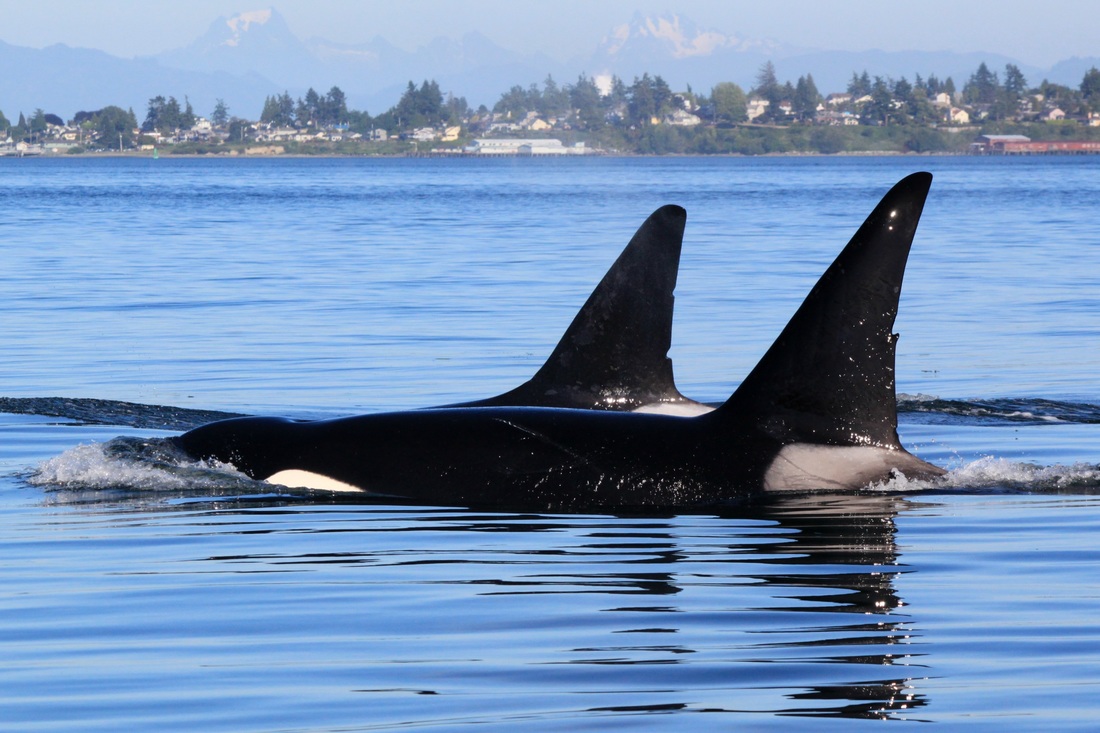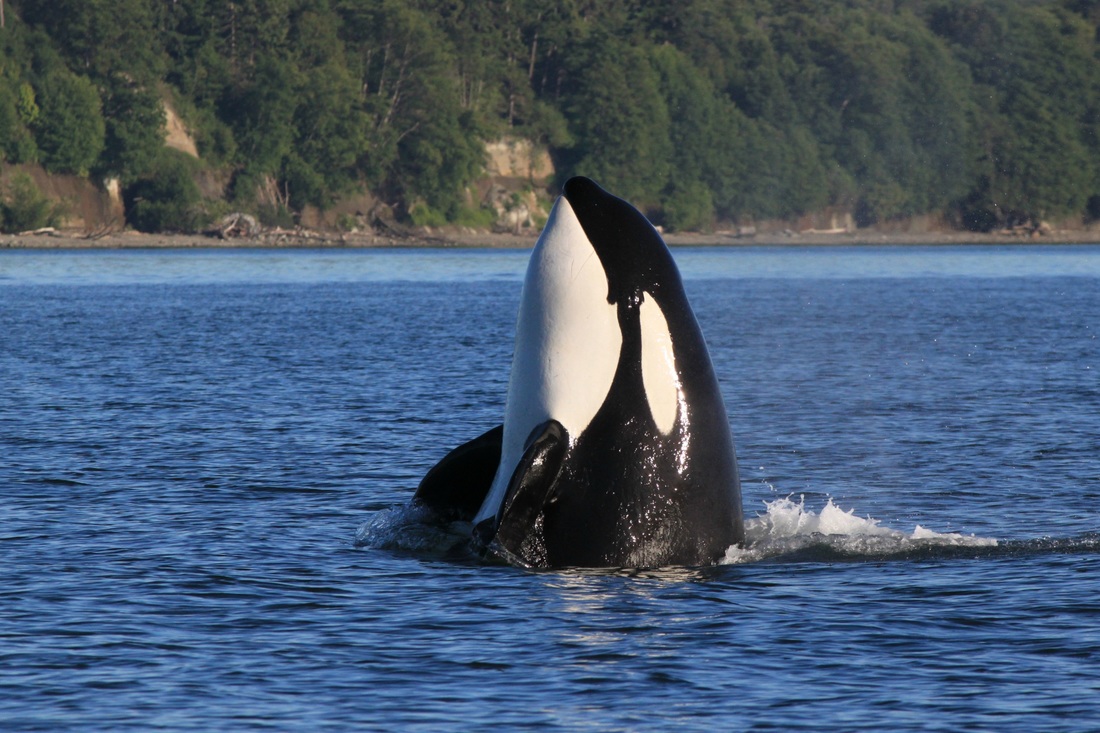Once at the center, I was surprised to see J pod heading South (towards the Ls) and was finally able to see J52 for the first time since his birth in late March. Shachi J19 breached once as she went by but soon there were many more breaches and splashes from other J pod members as they closed the gap between them and the Ls. J pod and the fifteen L pod members all met up after passing the center and it was possibly the first time the two pods had seen each other for quite some time.
Later on, reports came in that a group of marine mammal eating Transient orcas had been spotted by whale watching boats heading North near Partridge Bank. Once they were in Roasrio Strait, Dave Ellifrit and I headed out on the water under permit to see who they were. We motored down San Juan Channel, through Wasp Pass, Harney Channel, and Thatcher Pass, and down Rosario Strait to the West side of Burrows Island. Once on scene, we identified the orcas as the T046s and T137s. The T046 matriline is made up of the matriarch, T046, and her four offspring: T122, T046D, T046E (sprouter male), and T046F. The T137 matriline is made of the matriarch, T137, and her three offspring: T137A (sprouter male), T137B, and T137D.
T046D and T137A soon broke off from the rest of group to fool around and off Fidalgo Head they acted like they had made a kill. Up ahead of them, the rest of orcas also acted like they had made a kill, possibly a harbor seal. After some tail slaps, splashing, and multiple reverse surfacings (by T137), the main group continued on their way and by time they were off of Shannon Point, T046D and T137A had caught back up with them. From there, the orcas headed past the Anacortes ferry dock and into Bellingham Channel. Off of Deepwater Bay at Cypress Island, they spread out and killed at least one harbor seal, if not more. For about the next hour, the orcas milled about the bay, feeding and celebrating. There were lots of spy hops (by at least T046E, T122, T137, and T137B), too many tail slaps to count (mainly from T046F, some from T046D), pec slaps (T046F), a dorsal fin slap (T046D), a headstand (T046D), a half breach (T046F), an inverted tail slap (T137A), and lots of backwards swimming from T137 again. T046D and T137A went back to fooling around and T137A even rolled over at the surface to show off his seasnake.
Please do not use these photos without permission. Just ask.


